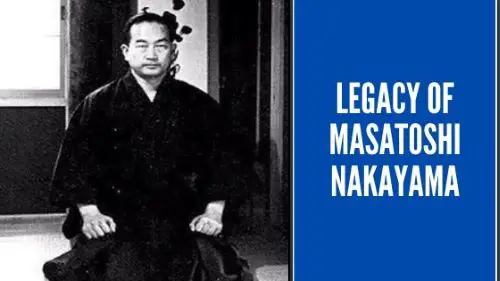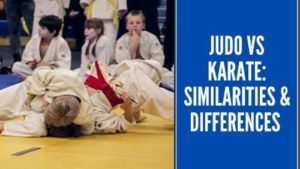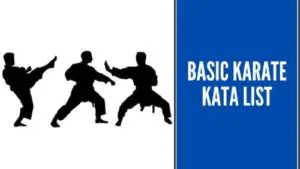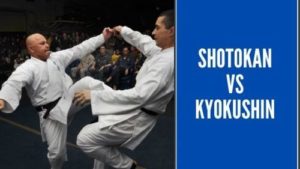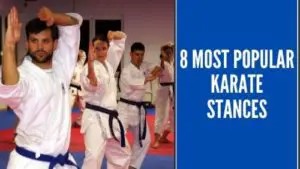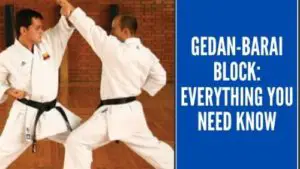Are you planning to learn karate? Before you do it, we suggest that you take the time to learn some of the key figures that it has. Learning about key figures will boost your love and passion for karate.
If you’re interested to do it, then reading about Master Masatoshi Nakayama is a great way to start.
Who Is Masatoshi Nakayama?
Masatoshi Nakayama was born for the art of martial combat. He is a descendant of the Sanada Clan, a renowned lineage of Kenjutsu instructors in the Nagano region. His father was the last to teach Kenjutsu in the family.
His father, on the other and, was a renowned judo practitioner. These two figures helped to shape Masatoshi Nakayama’s interest and love to learn martial arts.
He enrolled in Takoshoku University in 1932 and in there, he studied karate under the guidance of Master Funakoshi Gichin. Masatoshi Nakayama was a notable student who displayed outstanding talent in executing techniques, movements, and stances.
This natural ability for martial arts allowed him to foster a close relationship with his master. This allowed him to assist in the demonstration and instruction during karate lessons.
Masatoshi Nakayama’s deep understanding and philosophy of Karate-Do mostly came from his master. By assimilating the techniques and knowledge of Funakoshi Gichin, he was able to grasp a thorough understanding of the ins and outs of karate. Upon graduating in 1937, he went to China to work for the military.
Even his job in the army did not stunt his growth as a Karate practitioner. While in China, he had the chance to learn under the guidance of Master Pai. Under the roof of Master Pai, Masatoshi Nakayama learned Northern Kung Fu style movements such as reverse roundhouse kick (ura mawashi geri) which he later incorporated with karate. Upon his return to Japan, he gradually built his karate career.
Notable Achievements
Masatoshi Nakayama and his colleagues were the ones who initiated the formation of the Japanese Karate Association (JKA). The JKA helped to establish a more formal method of teaching karate and allowed masters to attract more students. JKA was very successful and Japan was soon filled with its dojos. Funakoshi Gichin was the first formal head of the organization while Masatoshi Nakayama served as chief instructor.
In 1948 Nakayama, together with his senior students, had the chance to demonstrate Karate to U.S. air force personnel based in Tachikawa. This demonstration was highly praised by the audience and made them realize that Karate has practical application for actual combat. During the next few months of the same year, he went to the U.S and taught karate to Americans going from one place to another.
Aside from karate, he started to learn kinetics, physiology, and anatomy. The reason for this was simple. Masatoshi Nakayomi wanted to provide instructions and understanding to karate in a more scientific approach.
In 1955, Masatoshi Nakayama assumed leadership of JKA. This event gave Nakayama the opportunity to carry out his plans to improve karate teaching methods and popularity.
In 1956, Masatoshi Nakayama formulated his elite instructor program with the help of Teruyuki Kozaki. This program not only taught students karate but also educated them in physiology, anatomy, and kinetics. These gave students a more solid understanding of the applicability of the techniques and stances of Karate.
The global popularity of Karate can be attributed to Masatoshi Nakayama. In the 1960s and 1970s graduates of his elite instructor program were given the task to teach and build karate dojos all over the world. Student’s reached far places such as Hawaii, United States, Taiwan, etc.
Nakayama was the first to launch an initiative that adds a competitive element to Karate. Before this, the student’s merely practiced karate for the sake of demonstration and no avenue was available to compete with each other. Masatoshi Nakayama saw this lack of competitive element as a threat to the interest of students. To avert this, Nakayama established the rules for the birth of karate competition
Aside from establishing karate competition rules, Masatoshi Nakayama also authored various karate books that allowed to spread information regarding karate like wildfire. The most notable of these books is titled “Dynamic Karate” and “The Best Karate Series”. He also produced films and videos that provided detailed information on Kata, Kihon, and Kumite.
He’s the first living master to be awarded the rank of 9th dan. This title gave him the persona of a formidable master among all of those of practice karate. After his death, the JKA furthered his title and gave him the rank of 10th dan making him one of the highest-ranking masters in karate history.
Cause of Death
Masatoshi Nakayama died due to natural causes at the age of 74 in 1987. After his death, political turmoil emerged within the JKA which led to its weakening as an organization. Soon enough, it was split into two factions. It’s notable that such happenings only occurred after his death for it indicates that Masatoshi Nakayama was a well-respected figure within the JKA.
Notable Students
Masatoshi Nakayama contributed a lot to the JKA during its early years. His hard work and perseverance made it possible for the association to attract and train various students. Students training under Masatoshi Nakayama describe him as a teacher which pushes them to the limits but provides care at the same time. His expertise in karate produced the following notable students
Kego Abe
Kego Abe is one of the most technically gifted students that Masatoshi Nakayama produced. He puts emphasis on the real application of the different movements and stance in karate. In 1967 he took part in the James Bond film ‘You Only Live Once”. Originally, the part was intended for his master but he was sent as a replacement due to the busy schedule of Masatoshi Nakayama at that time,
Upon graduating his karate lessons, Kego Abe served as an instructor for JKA and various universities in Japan such as Teiko University. Many students loved his teaching which puts importance on learning the basics of karate as one of the means to develop a deeper understanding of it.
On February 10, 1999, Kego founded in Japan Shotokan Karate Association. Within this organization, he continued to teach what he learned from Masatoshi Nakayama to numerous students. He acted as chief instructor and with the help of his peers, JSKA grew into a successful organization. In 2002, JSKA launched a bi-annual world championship. The first of its kind was held in Germany
Tetsuhiko Asai
Also known as thunderous storm, Tetsuhiko Asai fused karate with other martial arts such as White Crane Kung Fu to craft a combat style unique only to him. Aside from karate he also held ranks in Judo, Jukendo, Kendo, and Judo. He’s a student of Masatoshi Nakayama that aimed to promote karate by combining it with other martial arts.
Asai taught karate in Hawai in 1966. He served as 3rd instructor and extended his stay for 4 years. His time in Hawai gave him the opportunity to further explore karate and combine it with different martial arts. In 1969, he went to Taiwan and stayed until 1973. His time in Taiwan was spent traveling with his wife and teaching karate from place to place.
Tetsuhiko Asai’s most celebrated achievement is his efforts to promote karate in Taiwan. Due to his efforts, Taiwan soon loved karate as a recreational activity and soon enough, many demonstrations and tournaments were held. Seeing that karate is widely welcomed by Taiwanese people, he arranged Japanese instructors to teach at different locations in the country.
In 1973, Asai established the Chinese Taipei Karate-Do Federation. This organization helped to build the authority and popularity of karate dojos in Taiwan and neighboring countries. The roots of Taiwanese karate can be traced back to Tetsuhiko Asai and his efforts.
Aside from the two students listed above. Masatoshi Nakayama also produced students that appeared in various magazines and t.v shows such as :
- Keinosuke Enoeda
- Hirokazu Kanazawa
- Takayuki Mikami
- Teruyuki Okazaki
- Yoshiharu Osaka
Related articles: Hammer Fist: How to use it Effectively
Books Authored By Masatoshi Nakayama
Masatoshi Nakayama authored many books about karate. As we end, we will provide you with some of the books he made and their brief description.
Best Karate Series Volume 1-12
The best karate series consists of eleven books that provide basic to advanced learning of karate. Each of the volumes will gradually deepen the reader’s understanding of various aspects of karate such as kumite and kata. Up to this day, the best karate series remains to be one of the most effective books for learning karate.
Dynamic Karate
Dynamic karate provides detailed instructions on the execution of various movements to karate paired with Masatoshi Nakayama’s experience as a karate instructor and competitor. It gives readers step by step approach to learning the karate movements pertaining to kicking, blocking and punching. Aside from this, it also gives knowledge about the meaning of various karate terms and their pronunciation.
Master Masatoshi Nakayama is one key figure that you should follow. His experiences will teach you that karate not only brings joy but success as well. Take your karate lessons seriously and you may become the next Masatoshi Nakayama of the present times.
